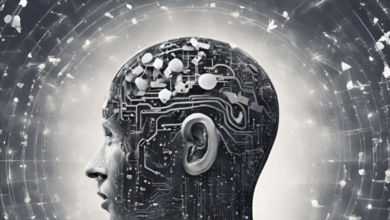By Soeren Bech, Associate Vice President, Persistent Systems
The world of online customer service is changing thanks to life-like computer programs taking more of the workload from customer service teams.
The shift to these digital programs is becoming so prevalent it’s becoming harder to tell ‘real people’ from interactions that are rooted in artificial intelligence (AI) and further refined by machine learning (ML). Such are the advances being made in this area, businesses are turning to conversational AI — or ‘chatbots’, as they’re commonly known — to work alongside customer service agents.
From answering simple questions to handling more complex queries or even complaints, the number of interactions being dealt with by programable ‘bots’ instead of human customer experience (CX) personnel continues to rise.
Today’s AI chatbots are more advanced than their rudimentary ancestors
Although chatbots have been in circulation for more than 20 years, it’s fair to say that earlier manifestations were somewhat rudimentary, leaving many customers dissatisfied and frustrated by the lack of help they provided.
However, recent technological developments have taken simple chatbot functionality to a whole new level with the addition of more refined conversational AI (CAI) with platforms such a such as Kore.ai, AWS Lex, Google DialogFlow and AzureBot among the market leaders.
As its name suggests, CAI seeks to deliver much more than simple automated responses. Instead, it works on two important levels.
First, CAI uses sophisticated AI to access and harness the intelligence of a whole organisation and its systems to find and retrieve information relevant to an enquiry.
Second, once it’s found the information that’s needed, CAI provides a realistic human-like conversation or interaction to enhance and maximise CX.
Reducing costs is a key driver for the adoption of CAI
There are plenty of reasons why businesses and other organisations might want to adopt CAI including improved customer service and faster responses. But a key driver is also cost. Put simply, an AI-powered technology solution can handle and resolve far more calls or emails than a human team. And chatbots can work 24/7 with no breaks, thereby handling a constant stream of enquiries and interactions.
One example where CAI technology has been put to good use is AGCO, the global agricultural machinery manufacturer, which recently implemented CAI technology to deal with customer enquiries.
AGCO’s advanced CAI bots play a key role in the sales funnel for the business. Not only can they answer questions about component parts and whether they’re in stock, they can also shift the conversation to ask whether the customer wants to place an order.
Chatbot-derived data analytics help make business decisions
For those organisations exploring CAI technology, the key differentiator compared to traditional chatbots is the ability to perform analytics on conversations and queries.
What this means for AGCO, for instance, is that it can assess which parts are requested most regularly and make sure these are in stock. This simple, yet quantifiable benefit is good news for customers, who receive prompt service and are more likely to find a desired product in stock as AGC can use data to plan and future-proof its operations.
That’s not all. This approach can also help to unify the customer experience. In other words, it leads to a more consistent response in terms of the way customers are treated and the outcome of bot-based interactions.
That said, it doesn’t mean all chatbots behave the same. Far from it.
One of the advances made to modern technology is that today’s CAI solutions can adapt to their environment, distinguishing between regional accents and dialects, picking up slang and abbreviations, and adapting to nuances within individual conversations. They can even ‘sense’ when someone is becoming frustrated or confused and, if needs be, re-direct a conversation to a real person.
The future for CAI lies in human-like refinement
As with any technology, CAI is constantly evolving. One of the most exciting developments currently being explored is combining CAI with augmented reality (AR).
By adding a layer of visualisation to customer conversations, the bots are essentially given ‘sight’, so they can ‘see’ a problem with a machine or a part. In what may appear to be verging on science fiction, the use of this additional visual stimulus means a bot may be able to discover a problem, suggest a specific solution, point to a page in a manual, or elevate the query to a human expert.
Whatever development happens next, it’s clear that chatbots have an increasingly important role to play in the communication between businesses and consumers. The best ones are those where people don’t even know they’re dealing with a chatbot. And if, for any reason, they do need to speak to a real person, that transfer from bot to human is done seamlessly without interruption.
Modern chat technology is becoming more life-like, and it’s taking customer service to a whole new level.





